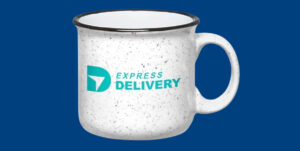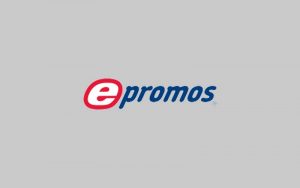08/25/2016
The Growing Popularity of 4 Color Processing
Four Color Processing has become an increasingly popular choice when printing promotional products — and for good reasons. Technical developments have allowed this advanced method of printing to be much more accessible at a reasonable price point.
Four Color Process, Explained
“The most common method of achieving color in printing is referred to as CMYK, four–color process, 4/c process or even just process.” Pantone explains. “To reproduce a color image, a file is separated into four different colors: Cyan (C), Magenta (M), Yellow (Y) and Black (K). During separation, screen tints comprised of small dots are applied at different angles to each of the four colors. The screened separations are then transferred to four different printing plates, one for each color, and run on a printing press with one color overprinting the next. The composite image fools the naked eye with the illusion of continuous tone.”
As a result, this process allows a lot more creativity and customization, allowing printers to achieve more realistic, detailed logos and printed graphics than one would with spot color. Pantone continues to explain, “Process colors are represented as percentages of cyan, magenta, yellow and black. Varying the percentages offers thousands of color possibilities. When four-color process printing is used to reproduce photographs, decorative elements such as borders and graphics can be created out of process colors. This helps to avoid the added expense of an extra plate needed to print each spot color.”
The Appeal of Four Color Processing
The appeal of process colors is a combination of cost-effectiveness and the ability to achieve thousands of colors, in contrast to the limiting 18-color palette offered by spot printing. Advancements like the 4/c process that have allowed color variation and precision is something noted by Warren Kapsner, owner of Rapid Graphics and Mailing Inc. in Minneapolis, Minnesota. “The man I bought this company from 31 years ago is 90 and he still stops in. When I show him how we print now he just can’t believe it.”
Kapsner continues, “Our company has been in business for 51 years. We went from setting up art by hand on a drafting table, shooting negatives in the dark room, developing film and then shooting plates of which we needed 4 for a 4 color process print job. The cost was much too high for a run of 500 or 1000 or even several thousand. The cost would exceed several hundred dollars before we printed the first piece. We now have 6 digital printers. If the customer sets up the piece we just have to load it into our computer from an e-mail or flash drive, adjust the color and print.”
Max Robinson of Ace Work Gear confirmed that aside from the visual advantages of spot color, price was also an attractive incentive for using spot color in their marketing materials. “We used 4 color processing for a large batch of flyers that we wanted to produce for marketing purposes. We were very satisfied with the end result and would use the process again. The main reason that we decided to use 4 color processing was because we’d been advised by a friend that it was far more cost-effective to use this method when producing large quantity runs compared to using toner based printing.”
Technical advancements, however, no longer limit the appeal of spot color to large batch prints. “The up-front cost is minimal so small quantities are now very affordable.” Kapnser explains. “There is no doubt that 4 color printing is much more attractive and professional looking than one or two color. In the past it was cost-prohibitive to have 4 color on small jobs. With advent of computers the printing world has changed to a degree that is almost unimaginable.”
Maintaining Visual Consistency in Your Branding and Promotional Efforts
Although four color processing is an attractive option for companies seeking to boost their business with high-quality promotional items, it doesn’t come without its drawbacks. Maintaining the same exact color across all branded materials and platforms can prove challenging, especially with the wide range of colors that four color processing offers. This is because paper, ink levels, printer expertise, equipment, and even the platform (i.e. digital versus physical marketing materials) can all produce subtle shifts in color.
While obvious color inconsistencies across branding materials can provoke a negative subconscious response from customers, subtle variances typically go unnoticed. This is explained by Josef Albers in his famous 1963 book Interaction of Color, where he demonstrated how the same color can be registered differently by people based on the environment in which it is viewed. This is why it is imperative to keep your branding consistent across all mediums, be it digital or physical. Maintaining consistency in your typeface, graphics, icons and other components of your brand identity will make it so that small variations in color is inconsequential.
Utilize 4 Color Processing to Enhance Your Promotional Output
Four color process is now ever popular – spanning past promotional products to everyday objects. It’s likely that the cereal box in the cupboard to your reusable grocery tote were printed using 4 color processing. Your company can now benefit from integrating anything from full-scale photography to vivid, detailed logos and graphics on a variety of promotional products. Use four color processing on anything from drink cozies to pens and branded t-shirts for a promotional item that really makes an impression on your customers. Interested in learning more? Connect with one of our Promo-Know-How Specialists, and they’ll be happy to talk you through the process!






